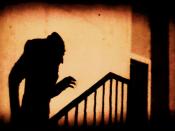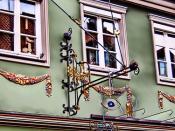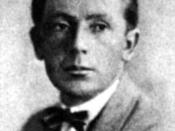German Cinema and Murnau
Murnau made his first appearance as a movie director with The Blue Boy, a film after Oscar Wilde's story about a Gainsborough-painting. The expressionist film Nosferatu was his artistic breakthrough in Germany, while The Last Laugh attracted the attention of Hollywood producers like William Fox. Faust was one of Murnau's last films, shot in Germany. He eventually went to America together with his screen writer Carl Mayer and directed Sunrise, another big success. Friedrich Wilhelm Murnau (1888-1931), better known as F. W. Murnau, is still considered to be one the most talented and influential directors of cinema at his time. He is often bracketed with two other bigwig German Filmmakers, Fritz Lang and G.W. Pabst. Murnau studied art history at the University of Heidelberg and learned about theatre by working in the acting company of Max Reinhardt.
Max Reinhardt's theater and the expressionist movement had a major impact on the style of filmmaking that arose in Germany after the First World War.
Through his work with Reinhardt, Murnau adapted the expressionistic style to film. Harsh lighting, obscure camera angles and the conveyance of extreme angst and anxiety were all aspects of this high contrast and surreal depiction of life. Expressionism placed greater value on emotion than realism, and its effects were often achieved through distortion.
Murnau's extensive studies of art history fills his films with striking images that remind viewers of Rembrandt (also an expressionist artist) in the intense range of light and dark of films like Faust, as well as German Romanticism in the rugged outdoor photography of Nosferatu.
The characters in his films are often overwhelmed by the power of the world around them, overwhelmed by external forces and all of the things that they can't control. However, at the same time they are...


